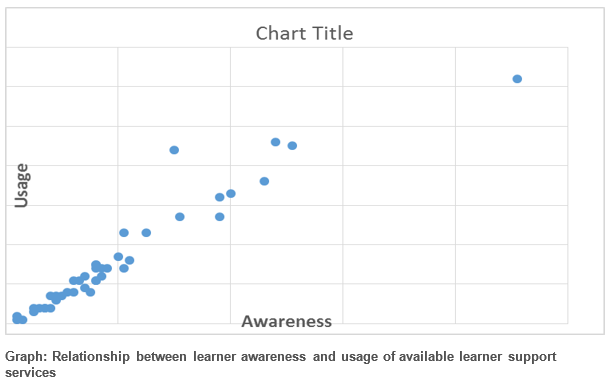QA4ODFL2/Management/Learner support
In this section of the course, you learn about how you should motivate learners to take advantage of learner support mechanisms you put in place. Essentially, it is important to get learners to know about the available support mechanisms through your communication strategies, and then getting them to understand the advantages of using the support mechanisms.
Creating Awareness
In the next activity you will analyse the results of a study that was conducted in one of the open schools in Southern Africa. This case illustrates the range of learner support services an open school can invest in to cater for the different learners that are enrolled.
Table 8: Learner Support Services at High Achieve Open School
| Learner Support Service | Tick service used (or you would use) in your context | |
|---|---|---|
| 1. Ringing a school bell to assemble learners | ||
| 2. Academic Counselling | ||
| 3. Student Guidance | ||
| 4.Telephone Contact with: | Learner Support Office | |
| Area Coordinator | ||
| Distance Education Coordinator | ||
| Tutors | ||
| Lecturers | ||
| 5.Other means of correspondence with | The Learner Support Office | |
| The Area Coordinator | ||
| The Distance Education Coordinator | ||
| Tutors | ||
| Lecturers | ||
| 6. Graduation Ceremonies | ||
| 7. Events such as Open Days and Information Campaigns | ||
| 8. Students’ Newsletter | ||
| 9. Field Trips | ||
| 10. Access to Library Services, Borrowing Books and Other Resources | ||
| 11. Study Guides/Course Book | ||
| 12. Tutorial Letters | ||
| 13. Face to Face Tutorials at Tutorial Centres | ||
| 14. Study Groups | ||
| 15. Vacation Workshops | ||
| 16. Contact Sessions | ||
| 17. Email | ||
| 18. Internet Access | ||
| 19. Website | ||
| 20. Computer Assisted Learning/Web-based Learning | ||
| 21. Video Recorded Information | ||
| 22. Radio Tutorials | ||
| 23. Audio Recorded Information | ||
| 24. Information Manual for Distance Education Students/ Learner Handbooks | ||
| 25. Comments from Tutors on Tutor Marked Assignments | ||
| 26. Information via SMS | ||
| 27. Toll free line | ||
| 28. Brochures | ||
| 29. Information leaflets | ||
| 30. Other (Please Specify) | ||
2. Download a digital version of Table 8 here. Save it where you can find it and use it again.
3. In the extreme right column of the table, put a tick against all the services you use (or you think can be used) in your context. Share your results with a colleague outside the platform. You may share physically if you have colleagues nearby or even through WhatsApp. You do not have to share in the forum.
4. In the same study referred to above, a survey was conducted to find out which support services learners were aware of and which ones they mostly used, and in which regions. The study revealed that services were used more in some regions than in others. Significant differences between regions in terms of use of such services were noted. These differences suggest the need for differentiated strategies in order to improve services where they are lowest
5. Study the results shown in Table 9 below, which show awareness and usage levels for the eight most popular services:
Table 9: Student awareness and usage of the top popular support services
| Type of service | Student awareness | Student usage |
|---|---|---|
| Study guides/course books | 91.2% | 61.6%), |
| Comments in tutor-marked assignments | 51.2% | (45.1%), |
| Face-to-face tutorials | 47.8% | (46.4%), |
| Telephonic contacts with tutors | 45.7% | (36.5%), |
| Tutorial letters | 40.4% | (33.1%). |
| Orientation workshops | 39.9% | 33.7%), |
| Academic counselling | 38% | 27.4% |
| Study groups | 37.8% | 31.9%). |
Partnerships
Creating an open school provides an opportunity for partnerships with a range of local governmental and non-governmental bodies. This enables an open school to acquire a regional and local network of centres which facilitate learning services to learners. At these centres, open school learners can physically meet occasionally with their facilitators and peers to discuss and share, they can access various services like study space, internet (depending on the partnership arrangements), library facilities and information from the institution, including assignment feedback. Such occasional gatherings help learners constitute small social learning networks which are key in overcoming the sense of isolation that often grips distance learners.
As an open school teacher/facilitator, you can also constitute virtual learning networks for your learners and encourage participation in the network. This could be invaluable support for learners if you structure it carefully into your teaching and learning design.

